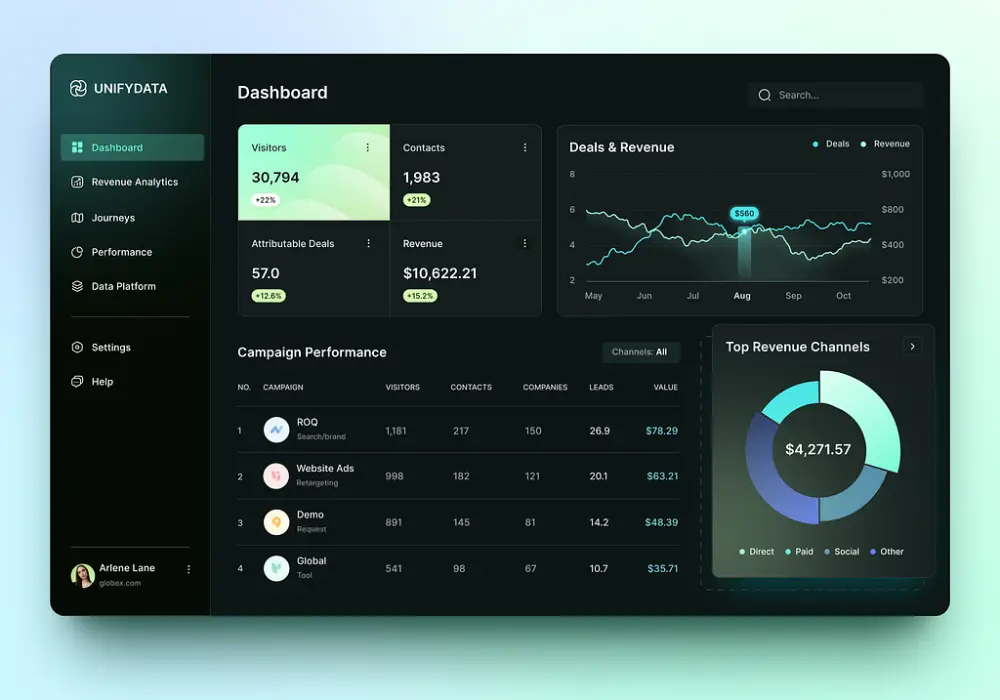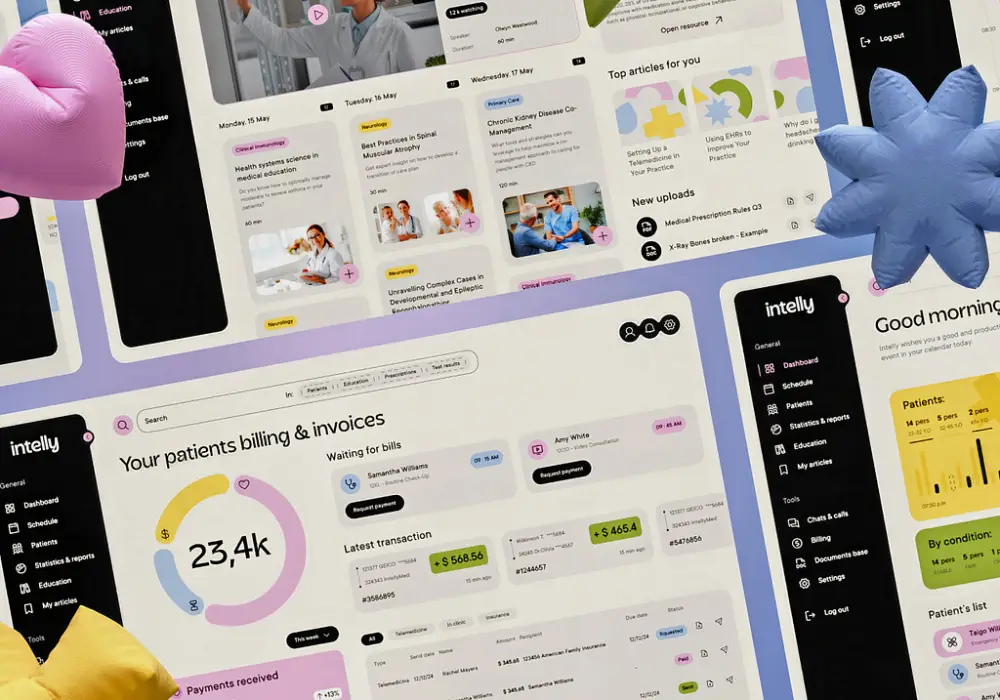Bespoke Software Development: Ensuring Long-Term Business Success
- TECHVIFY Team
- 0 Comments
In the ever-evolving landscape of technology, businesses are continually seeking solutions that not only streamline operations but also provide a competitive edge. This is where bespoke software development comes into play. Unlike off-the-shelf software, bespoke software is tailor-made from scratch, specifically designed to meet the unique requirements and challenges of a single business. This tailored approach ensures that every feature of the software aligns perfectly with the business’s core operational needs.
The investment in bespoke software development often translates into significant competitive advantages. Tailored software can adapt and grow in line with the business, supporting scalability and innovation. As businesses evolve, bespoke applications can be modified or expanded with less disruption compared to modifying packaged software.
This flexibility enables businesses to respond swiftly to market changes or internal demands, thereby greatly increasing their odds of standing out in their industries and scaling effortlessly. In this article, TECHVIFY will explore the world of bespoke software development, uncovering its distinct advantages and optimal use cases.
1. Understanding Bespoke Software Development

Bespoke software development involves creating custom software solutions tailored specifically to meet the unique needs and objectives of a business. Unlike off-the-shelf software that offers a one-size-fits-all solution, bespoke software is designed from the ground up to integrate seamlessly with existing workflows, practices, and business goals. This approach allows for the development of applications that perfectly align with a company’s specific requirements, ensuring that every feature and functionality serves a direct business purpose.
The benefits of bespoke software development extend beyond mere customization. Here are three key ways in which bespoke software can improve existing workflows:
- Enhanced Integration: Bespoke software can be developed to integrate effectively with existing business systems and tools, minimizing disruptions and maximizing the efficiency of workflows. This seamless integration often leads to improved data flow and reduced errors.
- Automation of Tasks: Custom software can automate repetitive and time-consuming tasks that are unique to a business’s operations. This automation not only speeds up processes but also frees up staff to focus on more strategic activities, thereby boosting productivity.
- Improved User Experience: By designing software that is specifically tailored for the end-users within a particular business environment, bespoke solutions often provide a more intuitive and user-friendly interface. This customization enhances the overall user experience, leading to higher satisfaction and productivity.
- Strategic Alignment: Bespoke software development ensures that every aspect of the software aligns with the company’s strategic vision, enhancing operational coherence and focus.
- Customized Functionality: Systems are built to cater exclusively to the specific workflows and customer interactions of the business, enhancing both efficiency and effectiveness.
- Streamlined Operations: The bespoke approach eliminates unnecessary functionalities typical of generic software, streamlining operations and improving user experience for the specific business environment.
Looking to Outsource Development?
Contact TECHVIFY, Vietnam’s Leading Offshore Software Development & Outsourcing Company, for a consultation and development services.
2. Comparing Bespoke Software Development with Off-the-Shelf Solutions
The choice between bespoke software development and off-the-shelf software solutions is crucial for businesses looking to optimize their technology strategy. While off-the-shelf software offers quick deployment and initial cost savings, bespoke software provides tailored functionalities that align closely with specific business needs.
| Factor | Bespoke Software Development | Off-the-Shelf Software |
|---|---|---|
| Customization | High customization to meet specific business needs. | Limited customization options. |
| Cost | Higher initial cost but potentially lower in the long term due to tailored solutions minimizing unnecessary functionality. | Lower initial cost but potential for higher long-term costs due to licensing fees and additional customization. |
| Implementation Time | Longer implementation time as the software is built from scratch. | Quick to implement as the software is pre-built. |
| Scalability | Easily scalable as changes can be made to accommodate business growth or change in processes. | Scalability can be limited, depending on the software’s architecture and licensing terms. |
| Support and Maintenance | Direct support and maintenance tailored to the specific software and business needs. | Standard support, which may not address specific issues unique to the business. |
| Integration | Designed to integrate seamlessly with existing business systems. | May require additional customization for integration. |
| Long-term Viability | Can be updated and modified indefinitely as per the evolving needs of the business. | May become obsolete or less efficient as business needs evolve and software updates lag. |
| Ownership | Full ownership of the software, allowing complete control over its use and modifications. | Dependent on the vendor for updates, modifications, and sometimes even ongoing use. |
| Initial Deployment Impact | Requires more resources and time upfront for planning and development, which could delay initial deployment. | Rapid deployment with immediate operational impact, beneficial for urgent needs. |
| Alignment with Business Strategy | Perfectly aligns with business strategies due to tailor-made solutions. | May not completely align with specific business strategies, requiring compromises. |
Learn More On:
3. Benefits Of Bespoke Software Development
When it comes to tailoring software solutions to precisely fit the unique needs and strategic goals of a business, bespoke software development often emerges as the optimal choice. This section delves into the various scenarios and strategic advantages of opting for custom-developed software, emphasizing how it aligns with long-term business objectives, enhances operational efficiency, and fosters competitive superiority.
3.1. Tailoring for Future Scalability
Bespoke software is inherently flexible, designed to grow and adapt alongside your business. This adaptability is crucial for companies planning significant growth or diversification in the future.
- Adaptability: Custom software can evolve as your business grows, supporting new processes and larger workloads without the need for replacement.
- Long-term relevance: Bespoke solutions can be updated or expanded to meet future technology standards and business requirements.
3.2. Streamlining Operations and Reducing Long-Term Costs
Custom software is specifically designed to match your business processes, which enhances efficiency and can significantly reduce operational costs over time.
- Efficiency: Custom software eliminates unnecessary functionalities, making operations smoother and more responsive.
- Cost-effectiveness: While the upfront cost is higher, the long-term savings from improved efficiencies and reduced need for additional software can be significant.
3.3. Securing a Competitive Edge
In competitive markets, having software that offers unique features and optimized performance can substantially differentiate a business from its competitors.
- Unique features: Stand out in the market with capabilities that competitors lack.
- Optimized performance: Custom applications can be fine-tuned for optimal performance, enhancing user experience and satisfaction.
3.4. Ensuring Greater Integration Capabilities
Custom software can be a game-changer for businesses that rely heavily on the seamless integration of various technologies and platforms.
- Seamless integration: Custom software can be designed to integrate flawlessly with existing business systems and software.
- Unified operations: Enhances the consistency and reliability of business operations through integrated systems.
3.5. Addressing Unique Business Needs
Every business has its unique challenges and requirements, which bespoke software can address by providing perfectly tailored functionalities.
- Custom-fit solutions: Software is crafted to address the specific challenges and requirements of your business.
- Strategic alignment: Ensures that every feature supports your business’s strategic goals and operational demands.
3.6. Enhancing Data Security and Compliance
Custom software allows businesses to implement specific security standards and compliance measures that are critical in their industry.
- Tailored security features: Custom software can be built with advanced security protocols specific to the needs and threats facing your industry.
- Regulatory compliance: Ensures that the software fully complies with industry regulations, which can be challenging with off-the-shelf products.
3.7. Facilitating Advanced Analytics and Reporting
Bespoke software can incorporate advanced analytics and customized reporting features that provide deeper insights into business operations and outcomes.
- Custom analytics: Get insights tailored to your specific business metrics and KPIs.
- Decision-making support: Enhanced reporting capabilities support more informed strategic decision-making processes.
3.8. Supporting Unique Customer Experiences
Custom software development allows for the creation of unique, user-centric designs that enhance customer interactions and satisfaction.
- Personalized user interfaces: Develop interfaces that cater specifically to your user base for improved engagement.
- Enhanced customer service: Implement features that directly improve customer interaction and satisfaction, such as customized communication tools or user support systems.
Learn More On:
4. A Step-by-Step Guide to Successful Bespoke Software Development
Bespoke software development demands meticulous planning and execution from the outset. Given its tailored nature, a well-structured approach is essential to ensure the software not only meets the specific needs of a business but also supports its strategic growth and innovation. Below is a comprehensive step-by-step guide that outlines the critical stages of developing custom software, from initial conceptualization to deployment and beyond.
4.1. Define Your Objectives
The first step in bespoke software development is clearly defining what you want to achieve with the software. Understanding and articulating your business needs and goals ensures that the software will be strategically aligned with your business objectives.
- Identify key problems: Determine the challenges that the software needs to solve.
- Set specific goals: Outline what the software should achieve in terms of functionality, user experience, and business value.
4.2. Conduct Thorough Market Research
Before diving into development, it’s important to understand the market landscape. This involves researching existing solutions, understanding user expectations, and identifying gaps that your software can fill.
- Analyze competitors: Look at similar offerings in the market to benchmark features and performance.
- Gather user insights: Collect feedback from potential users to understand their needs and preferences.
4.3. Choose the Right Development Partner
Selecting a reliable software development vendor is crucial. The ideal partner should balance cost, quality, and reliability, and have a proven track record in developing similar software.
- Evaluate expertise and experience: Check their portfolio and case studies to assess their capability in handling projects like yours.
- Consider communication and culture fit: Ensure they have good communication practices and a company culture that aligns with yours.
4.4. Plan and Prioritize Features
With a clear understanding of what needs to be achieved, you can begin planning the software’s features. Prioritizing these features helps manage development time and costs effectively.
- Create a feature list: List all desired features and functionalities.
- Prioritize based on impact and feasibility: Use techniques like the MoSCoW method (Must have, Should have, Could have, Won’t have this time) to prioritize.
4.5. Develop a Prototype
Developing a prototype is a practical approach to visualize how the software will work. It allows stakeholders to give feedback early in the process and make necessary adjustments before full-scale development begins.
- Test usability and design concepts: Use the prototype to refine user interfaces and experiences.
- Gather feedback: Present the prototype to a select group of end-users and stakeholders for their input.
4.6. Agile Development Process
Implement an agile development methodology to manage the software development. This approach supports flexibility and continuous improvement, which is ideal for bespoke software projects.
- Iterative development: Break the development into manageable sprints that deliver incremental value.
- Regular reviews and adaptations: Continuously test and refine the software based on user feedback and changing requirements.
4.7. Quality Assurance and Testing
Comprehensive testing is essential to ensure the software is reliable, secure, and performs as intended across all intended platforms and devices.
- Implement various testing stages: Include unit testing, integration testing, system testing, and acceptance testing.
- Plan for regression testing: Ensure new features and updates do not adversely affect existing functionality.
4.8. Deployment and Ongoing Support
Once tested, the software can be rolled out according to a well-planned deployment strategy. Additionally, providing ongoing support and maintenance is critical for long-term success.
- Phased rollout: Consider a staged deployment to mitigate risks.
- Support and updates: Establish a clear plan for dealing with bugs, updates, and new features post-launch.
By following these steps, businesses can maximize their chances of developing and launching successful bespoke software that not only meets but exceeds their expectations, providing a solid foundation for future growth and innovation.
Learn More On:
Conclusion
Bespoke software development is more than just a means to an end – it is a strategic investment in the future of a business. By creating solutions that are adaptable to future technologies and market shifts, companies can ensure they remain at the forefront of innovation. This foresight positions businesses to capitalize on emerging opportunities and mitigate risks associated with technological obsolescence or market changes.
Embracing bespoke software development is essential for businesses aiming to establish a robust, adaptable, and future-proof foundation. It empowers companies to not only meet their current operational needs but also to anticipate and shape their future requirements. The strategic foresight offered by bespoke software is invaluable, providing businesses with the tools they need to thrive in an ever-changing world and securing their place at the cutting edge of their respective industries.
What Is The Main Difference Between Bespoke And Custom Software Development?
Bespoke and custom software development are often used interchangeably to describe software tailored to a specific client's needs. However, "bespoke" typically emphasizes a highly personalized approach, akin to tailor-made clothing, whereas "custom" software can sometimes refer to more general modifications of existing products.
What Is The Benefit Of Bespoke Software Development?
The primary benefit of bespoke software development is its ability to meet the exact specifications of a business, optimizing operational efficiency and enhancing user experience. It allows for flexibility in updates and scalability, ensuring the software can evolve with the company's growth and changing needs.
When Should You Not Go For Bespoke Software Development?
Bespoke software development may not be suitable for businesses with a limited budget or those needing a quick deployment. It is also less practical when standard software available in the market already meets the business requirements effectively without significant modifications.
TECHVIFY – Global AI & Software Solution Company
From Startups to Industry Leaders: TECHVIFY prioritizes results, not just deliverables. Accelerate your time to market and see ROI early with high-performing teams, AI (including GenAI) Software Solutions, and ODC (Offshore Development Center) services.
- Email: [email protected]
- Phone: (+84)24.77762.666









